Welcome to a world where fashion history meets contemporary style. Retro fashion, with its nostalgic charm and timeless allure, is making a comeback in 2023. It’s a blend of old-fashioned elegance and modern aesthetics, bringing a touch of vintage glamour to the present.
What is retro fashion? It’s a celebration of throwback trends and vintage style, taking inspiration from iconic eras such as the 60s and 70s. From flapper dresses to high-waisted pants, retro outfits are redefining fashion with their unique fusion of old-world charisma and new-age sensibilities.
Key Takeaways:
- Retro fashion revives vintage style trends with a contemporary twist.
- Flapper dresses and high-waisted pants are transforming wardrobes with their historical charm.
- Retro fashion is a unique fusion of old-world allure and new-age aesthetics.
- It’s a celebration of the past and a nod to the enduring influence of vintage fashion.
- The return of retro fashion reflects a desire for uniqueness and sustainability in the modern fashion landscape.
Exploring the Revival of Retro: Ten Key Questions
Fashion is a fascinating realm that continuously draws inspiration from the past, reviving old styles and infusing them with a contemporary twist. The resurgence of vintage fashion is no exception, bringing back iconic trends from bygone eras and reimagining historical influences in exciting and innovative ways.
Vintage fashion holds a significant place in the modern fashion landscape, influencing current trends with more depth and complexity than mere imitation. It serves as a bridge between the elegance of the past and the dynamism of the present, creating a seamless fusion of vintage allure and modern aesthetics.
1. What drives the resurgence of vintage fashion?
The cyclical nature of fashion allows for the revival of retro trends, captivating fashion enthusiasts and proving that some styles truly stand the test of time. The yearning for nostalgia, combined with the desire for individuality in an age of mass production, fuels the resurgence of vintage fashion.
2. How does vintage fashion influence current trends?
Vintage fashion exerts a strong influence on contemporary trends, going beyond simple imitation. It serves as a valuable source of inspiration, shaping the way we perceive and interpret fashion. From the silhouettes to the fabrics, vintage fashion provides a rich historical influence that enhances the breadth and depth of current styles.
3. What does the return of flapper dresses symbolize?
The revival of flapper dresses in modern fashion represents more than just a sartorial choice; it embodies freedom, daring self-expression, and the breaking of societal norms. Flapper dresses, popular in the exuberant 1920s, are characterized by their loose, drop-waist silhouette, intricate beading, and fringe detailing. By bringing back this iconic style, women reclaim their power, embracing their unique identities and unapologetically defying conventions.
4. How do high-waisted pants bridge the gap between vintage and contemporary style?
High-waisted pants are a versatile wardrobe staple that effortlessly bridges the gap between vintage and contemporary style. With their timeless appeal and figure-flattering fit, high-waisted pants offer a sophisticated and fashionable look. Whether paired with a tucked-in blouse for a professional ensemble or a crop top for a more casual chic vibe, high-waisted pants bring a touch of vintage flair to any outfit.
5. Why are cat-eye sunglasses a timeless fashion accessory?
Cat-eye sunglasses have transcended their retro origins and become a timeless fashion accessory that adds a touch of allure and glamour to any outfit. The distinct cat-eye shape, characterized by the upward sweep of the frame at the temple, accentuates the eyes and imparts a sense of chic sophistication. Whether paired with a vintage-inspired ensemble or a modern-day look, cat-eye sunglasses evoke a sense of timeless elegance.
6. How has tie-dye made a comeback in the 2023 fashion scene?
Tie-dye, a vibrant and bold trend from the 1960s, has made a notable comeback in the 2023 fashion scene. The resurgence of tie-dye allows individuals to channel the free-spirited essence of the ’60s, embracing a sense of individuality and rebellion. From T-shirts to dresses, tie-dye patterns inject bursts of color and personality into contemporary wardrobes, capturing the exuberance and uniqueness of the past.
7. How can you create a unique and personal style by balancing retro and contemporary elements?
The key to curating a unique and personal style lies in the artful combination of retro and contemporary elements. By blending vintage-inspired pieces with modern designs, you can create a wardrobe that reflects your individuality and captures the essence of both worlds. Mixing and matching different eras allows you to showcase your sartorial creativity while paying homage to the enduring charm of vintage fashion.
8. What makes the modern vintage phenomenon more than just a passing trend?
The modern vintage phenomenon goes beyond a fleeting trend; it represents the lasting impact and timeless appeal of vintage fashion. The revival of retro styles is deeply rooted in the appreciation for the distinctive qualities of past eras and the desire for sustainable and meaningful fashion choices. As we strive for a more conscious and thoughtful approach to fashion, the enduring charm of vintage fashion continues to captivate and inspire.
The Enduring Charm of Vintage Fashion
Vintage fashion is a testament to the visionary fashion sensibilities of past eras, with styles that continue to resonate today. With its timeless appeal and unique aesthetic, vintage fashion has made an indelible mark on the world of contemporary fashion.
One of the most remarkable aspects of vintage fashion is its ability to resurface on the runway, in street fashion, and in everyday wardrobes. Vintage styles seamlessly blend the old-world allure with the new-age aesthetic, creating a harmonious fusion of time periods. This blending of styles showcases the enduring charm and timeless sensibility of vintage fashion.
Designers often draw inspiration from vintage pieces, incorporating them into their collections to create a sense of nostalgia and add depth to their designs. Vintage styles have been a constant presence on the runway, influencing trends and infusing modern fashion with a touch of sophistication and artistry.
The influence of vintage fashion is not limited to the runway; it extends to street fashion and everyday wardrobes. Fashion enthusiasts embrace vintage clothing and accessories as a means of self-expression and a way to stand out from the crowd. Vintage pieces have an intrinsic ability to add character and individuality to an outfit, making them a staple in fashion-forward wardrobes.
Moreover, the resurgence of vintage fashion goes beyond mere imitation. It captures the captivating dance of eras, showcasing the enduring influence and allure of vintage fashion. Vintage styles remind us of the beauty of the past while offering endless possibilities for reinvention and personal style.
| Vintage Fashion’s Enduring Appeal | Timeless Style | Vintage Influence on Contemporary Fashion | Vintage Styles on the Runway |
|---|---|---|---|
| Vintage fashion resonates with fashion enthusiasts across generations, transcending time and trends. | Vintage style is timeless, with classic silhouettes, intricate details, and quality craftsmanship. | Vintage fashion influences contemporary trends, inspiring designers to create unique and nostalgic collections. | Vintage styles are showcased on the runway, infusing modern fashion with a touch of vintage glamour. |
The Roaring 1920s: Flapper Dresses
The 1920s, famously known as the Roaring Twenties, witnessed a remarkable transformation in the world of fashion. It was a time of cultural awakening, rebellion, and self-expression. At the forefront of this fashion revolution were flapper dresses, which symbolized the newfound freedom and progressive mindset of the era.
Flapper dresses are now experiencing a revival in the fashion landscape, capturing the imagination of designers and fashion enthusiasts alike. These dresses embody the spirit of the 1920s with their dropped waistlines, sequin embellishments, and fringe detailing.
The return of flapper dresses pays homage to the historical significance of the 1920s while embracing a contemporary aesthetic. The revival of this iconic style allows individuals to channel their inner Gatsby and embrace the glamour and sophistication of the Jazz Age.
Deep V-necklines for a Touch of Allure
When it comes to adding a touch of allure to modern fashion, deep V-necklines are leading the way as a prominent trend. The plunging neckline creates a sense of sophistication and femininity, drawing attention to the décolletage and adding an element of sensuality to any outfit.
But deep V-necklines are not just about revealing skin; they also offer an opportunity to reinvent the silhouette of dresses. The combination of deep V-necklines with drop waists and fringe detailing creates a unique and fashionable look that is both modern and classic.
The drop waist is a flattering feature that elongates the torso and creates a sleek and elegant line. Paired with a deep V-neckline, it accentuates the natural curves of the body and adds a touch of drama to the overall silhouette.
Additionally, fringe detailing adds movement and texture to the dress, making it visually appealing and capturing the eye. The playful sway of the fringe brings a sense of fun and movement to the outfit, creating an element of surprise and intrigue.
“Deep V-necklines, when paired with drop waists and fringe detailing, reinvent the silhouette of dresses, creating a unique and fashionable look that is both modern and classic.”
Whether it’s a little black dress with a deep V-neckline and fringe hem or a flowy maxi dress with a plunging neckline and drop waist, these elements combine to create a look that is effortlessly stylish and undeniably alluring.
So, if you’re looking to reinvent your wardrobe and make a bold fashion statement, consider incorporating deep V-necklines with drop waists and fringe detailing into your outfits. Embrace the trend and let your inner fashionista shine.
Key Takeaways:
- Deep V-necklines are a trend that adds allure to modern fashion.
- Drop waists and fringe detailing reinvent the silhouette of dresses.
- Deep V-necklines paired with drop waists accentuate the natural curves of the body.
- Fringe detailing adds movement and texture to the dress.
- Combining these elements creates a unique and fashionable look that is both modern and classic.
The Whimsical 1940s: High-Waisted Pants
The 1940s saw the emergence of high-waisted pants, and they quickly became a fashion staple known for their flattering fit and timeless appeal. Today, high-waisted pants are making a remarkable comeback, bridging the gap between vintage and contemporary style.
What sets high-waisted pants apart is their ability to accentuate the natural waistline, creating a flattering silhouette for all body types. The higher rise elongates the legs and cinches the waist, resulting in a polished and sophisticated look.
Whether paired with a tucked-in blouse, a cropped top, or a tailored blazer, high-waisted pants effortlessly exude elegance and versatility. They can be dressed up for formal occasions or dressed down for a casual yet chic ensemble.
High-waisted pants offer endless styling possibilities, allowing you to experiment with different lengths, fabrics, and prints. From wide-leg trousers to skinny jeans, there is a high-waisted option for every fashion preference.
Inspired by the fashion icons of the 1940s and elevated with modern twists, high-waisted pants have regained their status as a wardrobe essential. Their timeless appeal and flattering fit make them a must-have item for anyone looking to make a fashion statement.
Wide-Leg Silhouettes for a Breezy, Casual Look
As fashion trends continuously evolve, wide-leg silhouettes have emerged as a prominent style, offering a breezy and casual look that perfectly blends comfort and fashion. Featuring voluminous and loose-fitting bottoms, wide-leg pants and skirts have become a go-to choice for those seeking a relaxed yet fashionable ensemble.
Wide-leg silhouettes have gained popularity due to their versatility and ability to flatter various body shapes. The flowing nature of the fabric creates movement and adds an effortless charm to any outfit. Whether paired with a fitted top or a loose blouse, wide-leg silhouettes exude a relaxed and chic vibe.
The beauty of wide-leg silhouettes lies in their ability to create a balance between a casual and fashionable look. They can be styled for both day and night occasions, making them a versatile wardrobe staple. For a casual daytime look, pair wide-leg pants with a simple t-shirt and sneakers. To dress it up for the evening, switch to heels and add a stylish blouse or blazer.
The fashion world has embraced the wide-leg trend, with designers incorporating this silhouette in their collections. From high-end fashion houses to streetwear brands, wide-leg pants and skirts continue to make a statement on the runway and in everyday wardrobes.
Wide-leg silhouettes offer the perfect combination of relaxed comfort and style, making them a must-have for fashion-forward individuals who want to achieve a casual yet fashionable look.
To fully appreciate the appeal of wide-leg silhouettes, let’s take a look at a comparison between wide-leg pants and the traditional slim-fit pants:
| Wide-Leg Silhouettes | Slim-Fit Pants | |
|---|---|---|
| Comfort | Loose and breathable fabric allows for ease of movement. | Tighter fit can restrict movement and may feel constricting. |
| Style | Creates a relaxed and bohemian vibe, perfect for casual outings. | Offers a sleek and tailored look, suitable for formal occasions. |
| Versatility | Can be dressed up or down easily, making them suitable for various occasions. | Primarily worn in formal or professional settings. |
As seen in the comparison, wide-leg silhouettes offer a distinct advantage in terms of comfort, style, and versatility. Their relaxed fit and effortless charm make them a go-to choice for those seeking a casual yet fashionable look.
The Stylish 1950s: Cat-Eye Sunglasses
The 1950s was an era renowned for its timeless fashion and iconic accessories. One such accessory that has made a captivating comeback is the cat-eye sunglasses. These stylish shades, popularized in the ’50s, have once again captured the imagination of fashion enthusiasts, adding a touch of vintage glamour to contemporary looks.
Cat-eye sunglasses are characterized by their distinct upswept outer corners, resembling the shape of a cat’s eye. The sleek silhouette and exaggerated frames of these sunglasses exude a sense of elegance and femininity. It’s no wonder that cat-eye sunglasses have stood the test of time, becoming a timeless fashion accessory that effortlessly elevates any outfit.
From classic tortoiseshell patterns to bold rhinestone embellishments, cat-eye sunglasses come in a variety of styles, catering to different preferences and fashion sensibilities. The oversized frames add a statement-making touch, while the cat-eye shape creates a visually striking look.
Whether paired with a vintage-inspired ensemble or incorporated into a modern outfit, cat-eye sunglasses exude an air of vintage glamour that transcends eras. The resurgence of these iconic sunglasses signifies the everlasting appeal of vintage fashion and the enduring allure of the 1950s.
“Cat-eye sunglasses are the epitome of timeless elegance and vintage glamour. Their distinctive shape and stylish frames instantly elevate any look, making them a must-have accessory for fashion-forward individuals.”
Embrace the revival of cat-eye sunglasses and channel the effortless charm of the 1950s. With their ability to add a touch of vintage glamour to contemporary fashion, these sunglasses are sure to make a lasting impression, whether at a stylish soiree or on a casual day out.
The Timeless Allure of Cat-Eye Sunglasses
Cat-eye sunglasses have a rich history and have graced the faces of countless fashion icons throughout the years. From Marilyn Monroe to Audrey Hepburn, these iconic shades have been synonymous with vintage glamour and timeless style.
| Iconic Figures | Signature Style |
|---|---|
| Marilyn Monroe | Glamorous and feminine |
| Audrey Hepburn | Elegant and sophisticated |
| Grace Kelly | Regal and refined |
| Elizabeth Taylor | Bold and glamorous |
As demonstrated by these legendary figures, cat-eye sunglasses have the remarkable ability to instantly transform a look, exuding an air of confidence and sophistication. Whether worn with a vintage-inspired tea dress or modern jeans and a leather jacket, cat-eye sunglasses continue to be a coveted accessory that adds a touch of vintage allure to any ensemble.
The Vibrant 1960s: Tie-Dye
The tie-dye revival from the bold and vibrant 1960s is making waves in the fashion world once again. This iconic trend, known for its vibrant colors and individualistic spirit, is capturing the hearts of fashion enthusiasts. From oversized t-shirts to sweat sets and swirling patterns, tie-dye is embracing its roots and channeling the free-spirited energy of the ’60s.
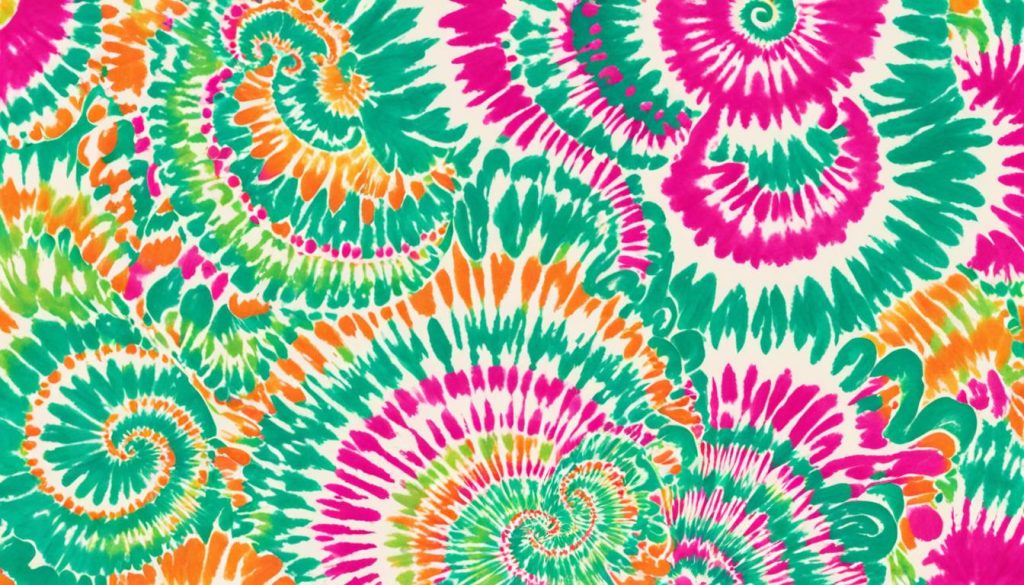
During the 1960s, tie-dye became a symbol of rebellion and self-expression, reflecting the counterculture movement of the era. It was a time when bold and unconventional fashion choices embraced the spirit of freedom and non-conformity.
Tie-dye allows you to wear the colors of the rainbow and express your unique personality through fashion.
Today, tie-dye is back with a modern twist, infusing a touch of nostalgia into contemporary wardrobes. Its vibrant colors and playful patterns add a pop of personality to any outfit, making it an ideal choice for those who dare to stand out.
From Street Style to High Fashion
Tie-dye has transcended its casual roots and made its way into the world of high fashion. From runways to red carpets, designers are incorporating tie-dye into their collections, showcasing the versatility and impact of this timeless trend.
One of the reasons for tie-dye’s enduring appeal is its ability to create bold and eye-catching looks. Whether it’s a head-to-toe tie-dye ensemble or a subtle tie-dye accent piece, this trend adds a sense of vibrancy and energy to any outfit.
You don’t need to be a flower child to embrace the tie-dye trend. Incorporate a tie-dye piece into your wardrobe and let your inner free spirit shine.
With its undeniable influence from the ’60s, tie-dye brings a sense of joy and positivity to fashion. It’s a celebration of self-expression and individuality, allowing you to wear your colors proudly and make a statement wherever you go.
Curating Your Vintage Wardrobe
Curating a vintage wardrobe allows you to embrace the charm and timelessness of vintage fashion while infusing it with contemporary pieces to create a unique and balanced look. Mixing vintage and contemporary items offers endless possibilities for expressing your personal style and creating outfits that truly stand out.
When curating your vintage wardrobe, it’s important to pay attention to details and ensure that each piece you choose represents your individual taste. Start by browsing thrift stores, vintage boutiques, and online platforms that specialize in vintage fashion. Look for well-preserved garments that capture the essence of different eras, such as flapper dresses from the Roaring Twenties or high-waisted pants from the whimsical 1940s.
As you assemble your vintage pieces, don’t be afraid to mix them with contemporary items to create a modern twist. This blending of styles adds depth and versatility to your wardrobe, allowing you to showcase your creativity and individuality. Pair a vintage dress with a contemporary leather jacket or style a vintage blouse with jeans for a casual yet chic look.
Accessorizing vintage outfits is another way to elevate your overall ensemble. Statement jewelry, such as bold earrings or a chunky necklace, can add a touch of finesse to any vintage look. Scarves and belts are also great accessories to cinch in the waist or add flair to a dress or coat.
Remember, confidence is key when wearing vintage fashion. Embrace your unique style choices and wear them with pride. A vintage wardrobe offers an opportunity to make a fashion statement that is both timeless and memorable.
Benefits of Curating a Vintage Wardrobe:
- Express your individual style through the fusion of vintage and contemporary pieces.
- Create unique outfits that showcase your creativity and fashion sensibilities.
- Incorporate statement jewelry, scarves, and belts to accessorize vintage ensembles.
- Embrace the timeless charm of vintage fashion while staying relevant and fashionable.
Curating a vintage wardrobe is an exciting journey of self-expression and sartorial exploration. By mixing vintage and contemporary pieces and accessorizing with finesse, you can create a wardrobe that truly reflects your unique personality and style.
| Benefits of Curating a Vintage Wardrobe |
|---|
| Express your individual style through the fusion of vintage and contemporary pieces. |
| Create unique outfits that showcase your creativity and fashion sensibilities. |
| Incorporate statement jewelry, scarves, and belts to accessorize vintage ensembles. |
| Embrace the timeless charm of vintage fashion while staying relevant and fashionable. |
Modern Vintage: The New Age of Fashion
The resurgence of vintage trends is a symbol of our appreciation for past eras and our ability to derive inspiration from them. Vintage fashion is undergoing a reinterpretation, seamlessly integrated into the modern fashion landscape. The return of vintage trends reflects a shift towards slower fashion cycles, with a focus on sustainability and lasting style.
| Vintage Trends Resurgence | Reinterpretation of Classic Elements | Fashion Cycles and Vintage Revival |
|---|---|---|
| In recent years, vintage trends have made a powerful comeback in the fashion world, capturing the attention of designers, influencers, and consumers alike. | The reinterpretation of classic elements is at the heart of modern vintage fashion. Designers and stylists are breathing new life into old styles, combining vintage flair with contemporary twists. | The resurgence of vintage fashion reflects a shift in fashion cycles. Instead of following the rapid pace of fast fashion, the focus has shifted to sustainable and enduring style. |
| From flapper dresses of the roaring 1920s to the high-waisted pants of the whimsical 1940s, vintage elements are being reintroduced in a way that feels fresh and relevant. | Classic silhouettes, fabrics, and motifs are being reimagined and updated with modern aesthetics, creating a fusion of old and new that resonates with fashion-conscious individuals. | This shift towards sustainable fashion cycles allows for a deeper appreciation of the craftsmanship and timeless appeal of vintage fashion. |
“Vintage fashion is not just about nostalgia; it’s about preserving the beauty and history of fashion while making it relevant for the present.”
The Evolution of Fashion Cycles
Fashion cycles have undergone significant transformations throughout history, driven by various factors including world events and cultural shifts. Each era has left its unique mark on the fashion industry, shaping not only the clothing styles but also the duration and pace of trends.
One pivotal event that had a profound impact on fashion cycles was World War II. The global conflict necessitated a shift in the production and consumption of clothing. With resources diverted towards the war effort, practical and functional garments became the norm. The fashion industry adapted to the wartime conditions, focusing on utility and durability rather than extravagant designs.
Following the end of the war, there was a surge in consumerism. People embraced the opportunity to indulge in new styles and trends, leading to shorter fashion cycles. Rapid changes in fashion became the norm as individuals sought to keep up with the latest looks and express their identity through clothing choices.
Fast forward to the present day, and we find ourselves in the era of fast fashion. Characterized by inexpensive and readily available clothing, fast fashion has further accelerated fashion cycles. With new collections hitting stores at an unprecedented pace, the pressure to constantly update one’s wardrobe has intensified.
However, amidst this frenetic pace, there has been a growing shift towards the return of retro fashion. Retro styles, inspired by past eras, have gained popularity in recent years. This resurgence reflects a desire for unique and sustainable clothing options, as well as a nostalgia for bygone eras.
The return of retro fashion is rooted in the appreciation for the craftsmanship, quality, and enduring appeal of vintage clothing. By embracing retro styles, individuals can create distinctive looks that stand out in a sea of fast fashion. Additionally, the sustainability aspect of retro fashion aligns with a growing awareness of the environmental impact of disposable clothing.
As fashion cycles continue to evolve, the return of retro fashion offers a refreshing alternative to the relentless pace of fast fashion. By combining elements from the past with contemporary designs, individuals can curate their own unique and sustainable style.
Embrace the cyclical nature of fashion, and let retro fashion take you on a journey through time.
What is Vintage Fashion?
Vintage fashion, often referred to as retro fashion, encompasses clothing that is at least 20 years old but not more than 100 years old. Vintage clothing originates from the period spanning the 1920s to the 1980s, capturing the unique styles and aesthetics of each era.
Vintage clothing is highly regarded for its exceptional quality, meticulous attention to detail, and exquisite craftsmanship. It reflects the artistry and skill of the designers of the past, showcasing the enduring appeal of their work.
It is important to note that vintage fashion is distinct from retro fashion. While vintage fashion represents authentic clothing from past eras, retro fashion focuses on imitating and recreating the styles of the past. Vintage fashion embodies the essence of a specific time period, while retro fashion provides a modern interpretation of those styles.
When choosing vintage clothing, you can expect to find garments that exude character and history, offering a glimpse into the fashion preferences and trends of bygone eras. Each vintage piece tells a story, and wearing vintage fashion allows you to become a part of that narrative.
Whether you are drawn to the flapper dresses of the 1920s, the high-waisted pants of the 1940s, or the vibrant tie-dye prints of the 1960s, vintage fashion offers a diverse range of styles to suit various preferences and personalities.
By incorporating vintage pieces into your wardrobe, you can showcase your individuality and create a unique personal style that stands out from the crowd. Vintage fashion allows you to express yourself creatively while paying homage to the timeless allure of past fashion trends.
In the next section, we will delve deeper into the enduring charm of vintage fashion, exploring its impact on contemporary fashion and why it continues to captivate fashion enthusiasts around the world.
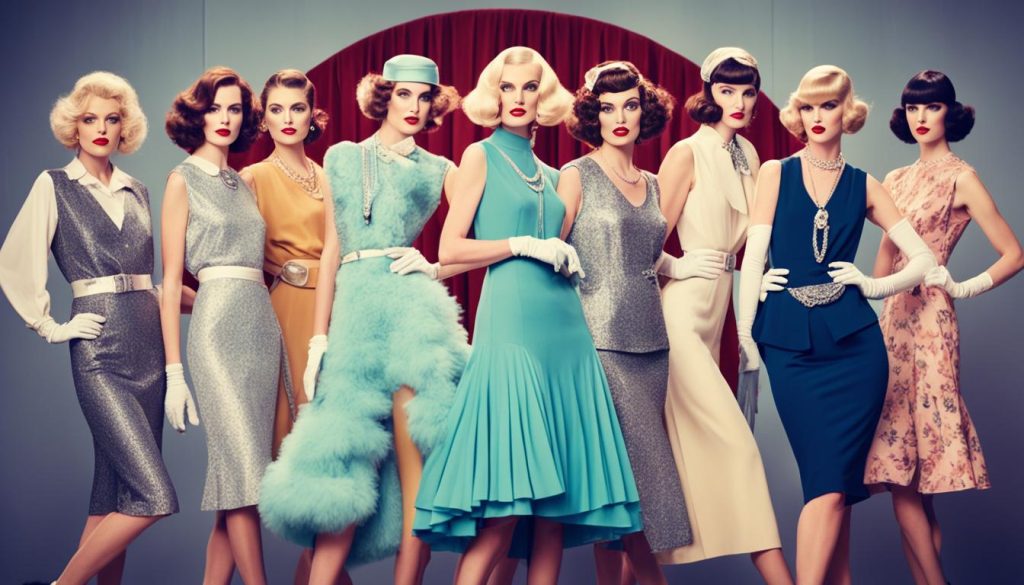
A Look Back on the 20th Century
The 20th century witnessed significant transformations in the world of fashion, with each decade giving rise to distinct styles that defined their respective eras. From the glamorous flapper dresses of the 1920s to the rebellious grunge fashion of the 1990s, retro fashion has consistently captivated generations with its timeless appeal.
The 1920s: The Era of Flapper Dresses
The 1920s, often referred to as the Roaring Twenties, marked a revolutionary period in fashion. The emergence of flapper dresses symbolized the spirit of the decade, with their loose silhouettes, drop waists, and shimmering fringes. These daring and glamorous dresses were a celebration of women’s newfound freedom and self-expression in the post-war era.
The 1930s: The Golden Age of Hollywood Glamour
The 1930s witnessed a shift towards opulence and elegance, thanks to the influence of Hollywood and the rise of the silver screen. Iconic film stars like Greta Garbo and Jean Harlow popularized figure-hugging bias-cut gowns, accentuated with luxurious fabrics and intricate embellishments. This era was defined by its romantic and glamorous fashion style.
The 1940s: Military-Inspired Utility Fashion
Amidst the turmoil of World War II, fashion took a practical turn in the 1940s. Military-inspired utility fashion came to the forefront, with women donning tailored suits, high-waisted pants, and practical workwear. The emphasis was on functionality and efficiency, reflecting the spirit of resilience during challenging times.
The 1950s: The Rise of Feminine Silhouettes
The 1950s embraced a return to femininity and grace, with iconic styles such as the full-skirted silhouette and the hourglass figure. Christian Dior’s New Look revolutionized fashion, presenting a romantic and feminine aesthetic with nipped-in waists, full skirts, and emphasized bustlines. This decade epitomized the post-war resurgence of style and glamour.
The 1960s: The Swinging Sixties and Youth Culture
The 1960s witnessed a cultural revolution, with the rise of youth culture and the rejection of tradition. This era gave birth to iconic styles such as mini skirts, go-go boots, and bold patterns. The mod fashion movement, popularized by designers like Mary Quant, embraced vibrant colors, geometric prints, and innovative silhouettes, reflecting the spirit of change and individualism.
The 1970s: Bohemian Chic and Disco Fever
The 1970s celebrated an eclectic mix of styles, from Bohemian chic to disco fever. This decade witnessed the embrace of bell-bottom pants, maxi dresses, and platform shoes. Disco fashion became a cultural phenomenon, with sequins, metallics, and exaggerated silhouettes dominating the dancefloors. The 1970s was a time of experimentation and self-expression.
The 1980s: Glamour, Power Dressing, and Excess
The 1980s ushered in an era of excess and power dressing. Shoulderpads, oversized blazers, and bold colors defined the fashion landscape. The rise of designer labels and the influence of popular culture, such as Madonna’s edgy style and the emergence of MTV, shaped the fashion trends of this decade. The 1980s celebrated individuality and bold self-expression.
The 1990s: Grunge, Minimalism, and Streetwear
The 1990s marked a departure from the glitz and glamour of the previous decades. Grunge fashion, popularized by bands like Nirvana, brought a casual and rebellious aesthetic to the forefront. Minimalism also gained traction, with clean lines and understated elegance becoming prominent. Streetwear, characterized by baggy jeans, oversized t-shirts, and sneakers, emerged as a cultural phenomenon that continues to influence fashion today.
Throughout the 20th century, fashion trends evolved in response to societal, cultural, and political changes. Each decade brought forth iconic styles that continue to inspire and influence contemporary fashion. The enduring allure of retro fashion echoes the rich and vibrant history of 20th century fashion, reminding us of the transformative power of style.
The Influence of Pop Culture on Vintage Revival
Pop culture has always been a powerful driver of fashion trends, and its impact on the revival of vintage fashion cannot be underestimated. From movies to music and iconic figures, pop culture has played a significant role in bringing vintage styles back into the mainstream.
The influence of movies on fashion cannot be overlooked. Films set in specific eras often inspire a renewed interest in the fashion of that time period. Costume designers meticulously recreate vintage looks, capturing the essence of the era and showcasing its unique style on the big screen.
“Movies have the power to transport us to different time periods and societies. By bringing vintage fashion to life, they spark nostalgia and fascination, inspiring viewers to incorporate elements of the past into their own wardrobe.”
Music also has a profound impact on fashion. Iconic musicians and bands can become style icons, with their fashion choices reflecting the spirit of a particular era. The emergence of genres such as rock ‘n’ roll and punk rock in the 20th century brought forth distinctive fashion movements that continue to inspire vintage revival today.
Furthermore, iconic figures from the past, such as Audrey Hepburn, Marilyn Monroe, and James Dean, have left an indelible mark on fashion. Their unique sense of style and timeless appeal have influenced generations, making vintage fashion an enduring symbol of elegance and individuality.
By engaging with pop culture, individuals are continually exposed to the allure of vintage fashion. Whether through movies, music, or iconic figures, pop culture has revitalized vintage styles, making them relevant and desirable once again.
| Movies | Music | Iconic Figures |
|---|---|---|
| Movies set in specific eras inspire interest in vintage fashion | Music and musicians reflect the spirit of a particular era | Iconic figures from the past leave a lasting impact on fashion |
| Costume designers recreate vintage looks, showcasing historical fashion | Emergence of genres brings forth distinctive fashion movements | Style icons like Audrey Hepburn and Marilyn Monroe inspire timeless elegance |
| Movies transport viewers to different time periods, sparking nostalgia | Punk rock and rock ‘n’ roll influence fashion with their rebellious style | Individuals emulate the fashion choices of iconic figures, embracing vintage elegance |
Conclusion
The revival of retro fashion goes beyond being a passing trend; it holds a lasting impact and embodies the timeless appeal of vintage fashion. As the fashion industry moves in cycles, vintage styles have resurfaced, captivating fashion enthusiasts with their enduring charm. Vintage fashion is not just a mere imitation of the past; it represents a fusion of old-world allure with new-age aesthetics, creating unique and individualistic looks.
By embracing retro fashion, you can tap into the rich history of fashion and discover styles that continue to inspire and influence contemporary trends. Vintage fashion serves as a bridge between different eras, seamlessly blending the old with the new. It allows you to curate a wardrobe that reflects your personal style while embracing the nostalgia and elegance of the past.
From the flapper dresses of the 1920s to the high-waisted pants of the 1940s and the cat-eye sunglasses of the 1950s, vintage fashion remains a source of inspiration for designers and fashion enthusiasts alike. Its timeless appeal ensures that it will continue to make its mark on the fashion industry for years to come, capturing the hearts of those who appreciate its enduring charm.
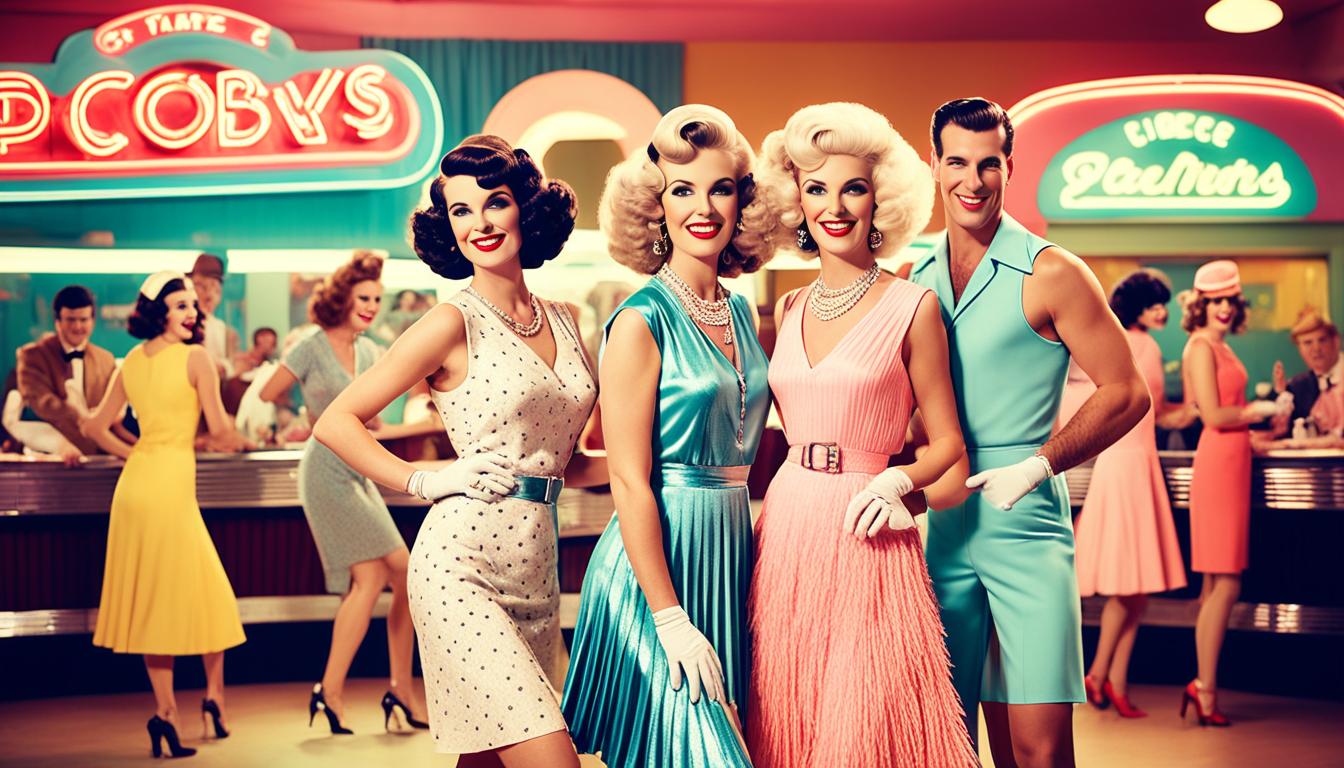
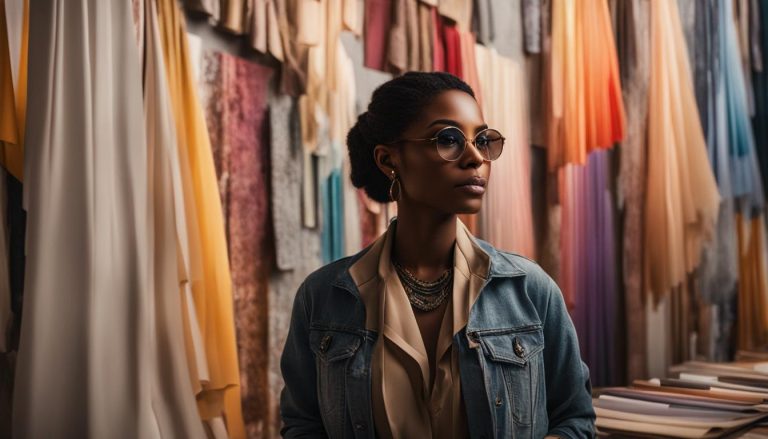
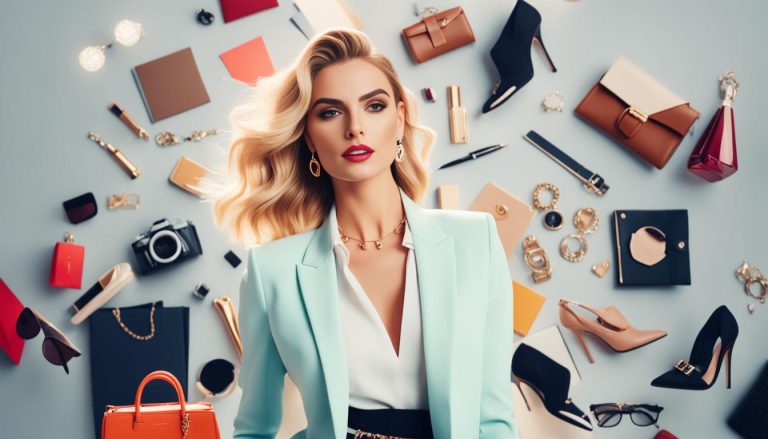


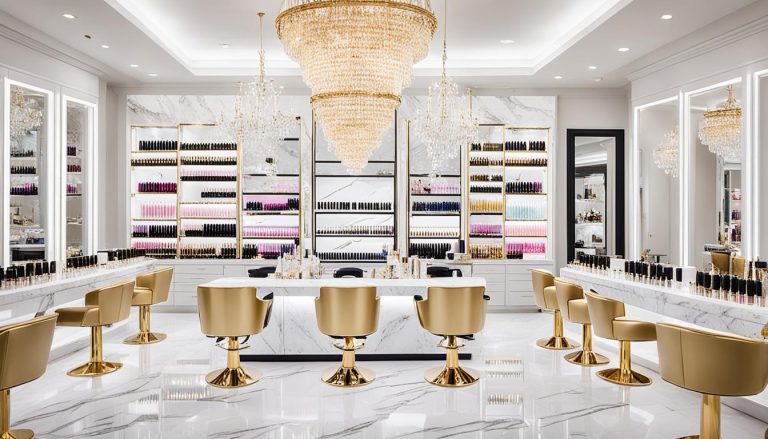
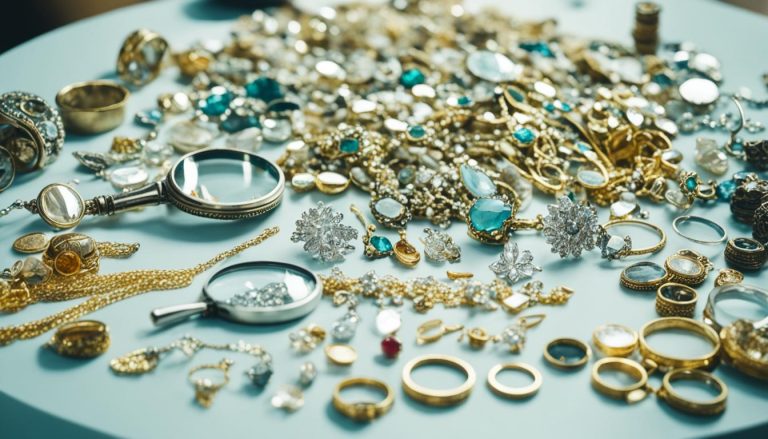

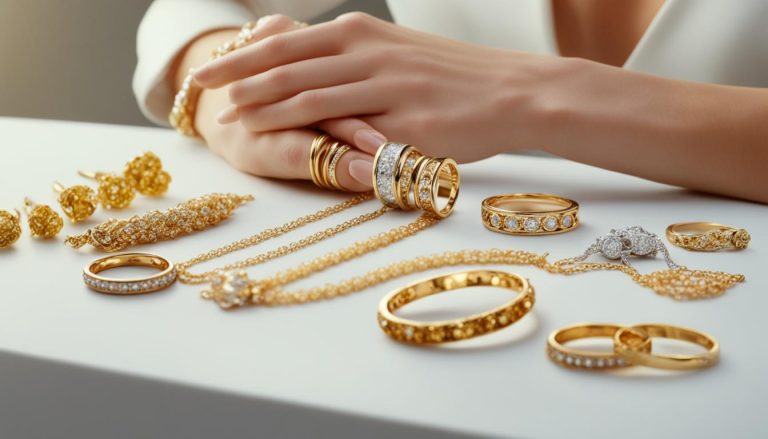
+ There are no comments
Add yours